Tom Turnbull has over 30 years experience in visual effects. He co-founded the studio Rocket Science VFX with Anthony Paterson in 2003. He has worked on a number of projects including The Expanse, Into the Badlands, Locke & Key and Halo.
What is your background?
I first became interested in Visual Effects in my teens in the 70’s, being influenced by Star Trek, 2001 and Star Wars. I read everything on the subject in the library that I could get my hands on and my friends and I spent many, many hours building miniatures and filming them. Ultimately I put that all aside to pursue real studies in Math, Physics and Computer Science. I eventually switched majors to Film Production and soon found my way into a job in the camera department in the burgeoning 1980’s Vancouver film industry. When Visual Effects began to open up in the 90’s I was perfectly set with a knowledge of computers, film production and a specialized knowledge of visual effects. It was a natural fit. I never left and I never lost my passion for it. From that point of view, I have been doing VFX for over almost 50 years, but professionally, more like 30.
What was your feeling to work with legendary Director Tim Burton?
It was both exciting and intimidating. There are very few directors who have so dominated a film-making style and sensibility to the point that they became a household name. I was excited to learn how he worked, intimidated in that I was unsure if I could live up to his standard. Regardless of my apprehensions, that sort of opportunity may come along once or twice in a career. I was not about to pass it up. Plus, I really like his movies.
How was your collaboration with him and with the showrunners?
Tim Burton is, as is obvious from his work, highly visual in his thinking. He is also very clear and particular about his vision, often communicating it by sketching something up. I am also a visual thinker so it made it easy for me to see where he wanted to go with an effect and what was important to him and what was not. At the same time he was remarkably collaborative and respectful. He was open to suggestions and if he liked an idea, he went with it. My initial apprehensions aside, he allowed a lot of freedom to pitch ideas, try things and even adjust the edit if it would make it better.
I worked with Miles Millar and Al Gough several times in the past, most significantly on three seasons of the AMC martial arts fantasy, “Into the Badlands”. That show was one of my most enjoyable experiences. There was always a lot going on, many diverse and interesting challenges. The show had a high energy dynamic, an environment where I was always on my toes, solving things and improvising on the fly. Regardless of what was on the call sheet, you never quite knew what surprises the day might bring. Over the run of the show and time in the trenches with them I feel I earned their trust, which carried over into Wednesday. If there is one thing I have learned in this business, that if you develop a good and transparent creative working relationship with individuals, keep it, it’s hard to replace.
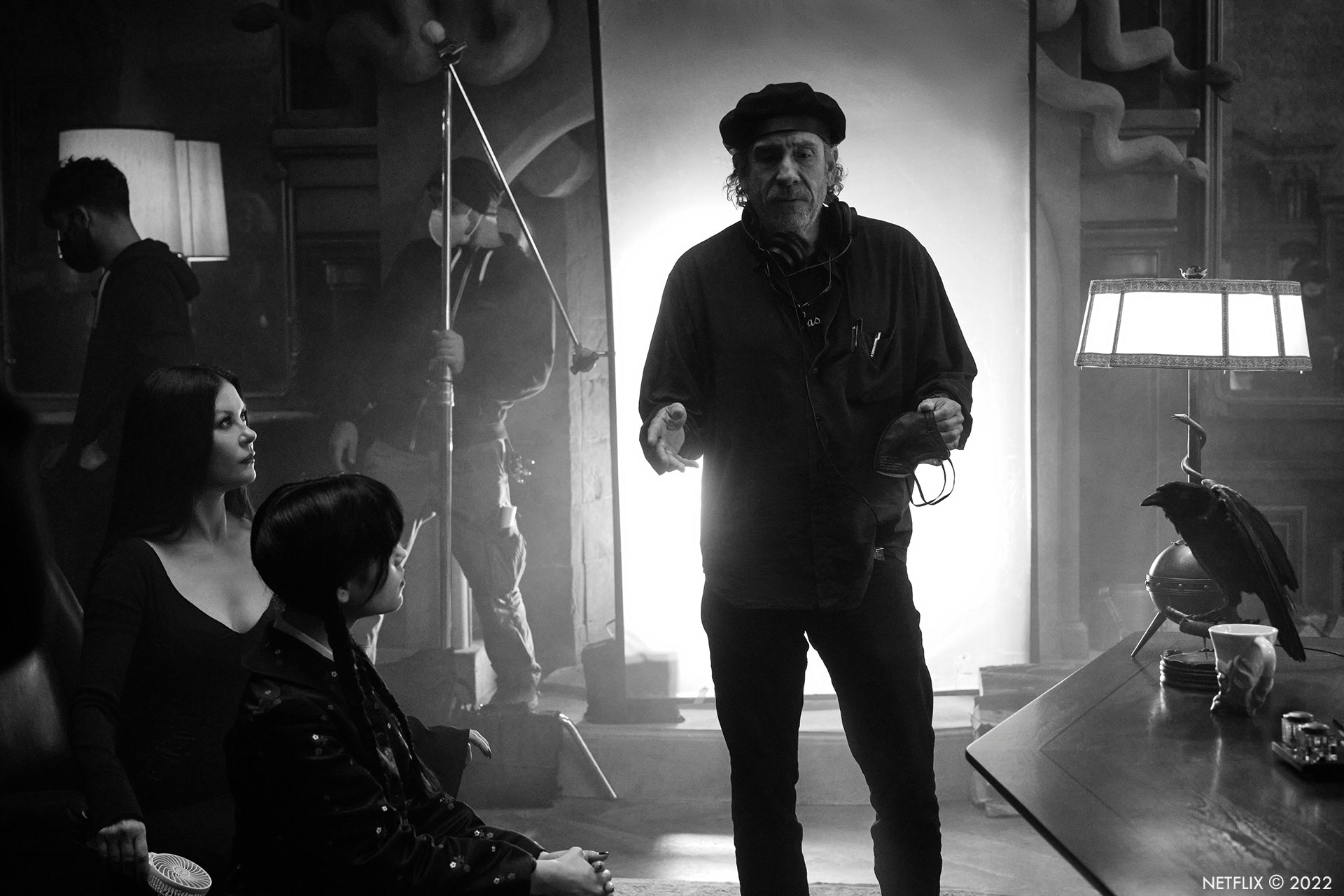
What was their approach and expectations about the VFX?
Tim is very much a fan of horror films, particularly of the 50’s and 60’s and was clearly drawing from that aesthetic. Many of his references came from there. If the note came back that the blood needs to be more Hammer Red you better know what that means. In keeping with that, he would often choose a practical approach to a given effect, perhaps with CG playing a supporting role. Even when full CG was the choice, the look and feel of an analog effect needed to be there. He expects a high degree of artistry with less emphasis on faithfully reproducing reality. You see that in the creature work where the critters are kind of photo real, but just slightly off, subtly anthropomorphized. If we modelled up something that was too realistic Tim would make a very small adjustment or two and it instantly became part of the Burton universe.
Tim weaves his effects into the scene, it’s almost like music. He seldom does an isolated VFX shot. If it is, it is for effect. More often it would be a series of shots. A good example of this is Crackstone’s disintegration, consisting of about a dozen shots, the action starting small, growing to a crescendo as Crackstone explodes before quietly ending on two shots of embers drifting and dying off.
Both Miles and Al are writers first and VFX to them is in support of story and character. There is a lot of story in every episode they write, leaving little room for the superfluous or unnecessary. If the shot has a point, it’s in, otherwise, onto the cutting room floor. It was also very clear from them that no effect should descend into camp. It’s fine to reference and play into camp but it always needed to stay classy. “No bad film” is something Miles would say. One of the things I really like about their style in general is the ability to go high and low, in one scene we might be working to a classical soundtrack and in another it’s a barf gag. They never talk down to their audience. I don’t think they treat VFX any differently.
Strangely, the two approaches gelled together and supported each other nicely.
How did you organize the work your VFX Producer?
I was on the show before the VFX Producer so I had a big hand in choosing the person and defining the role. I feel VFX Producing is a partnership and not merely tallying numbers and sending out PO’s. The VFX Producer needs to be “in the room” and part of the planning and creative decisions. Overseeing the budget is important but it is only part of the job. I knew from my experience on “Into the Badlands” that this would be a complex production. I looked for a Producer who also understood visual effects and filmmaking with a broad experience with both production and post. Someone who would not just say “no” but instead would think outside of the box and propose alternative, better solutions. I also knew that working in Bucharest under Covid that I would need someone capable and experienced to step onto set and supervise as required.
I found that person in Kent Johnson. Kent started in Visual Effects roughly the same time I did, somewhere around 1990, when processes were still largely analog and no one had really heard of a VFX Producer. We both worked through the transition to digital and the many years of development and refinement since. He, like myself, worked both as a VFX Producer and VFX Supervisor, that’s what you did back then. While Kent was ultimately responsible for the VFX Producing and I for the VFX Supervision, there was a lot of crossover between the roles.
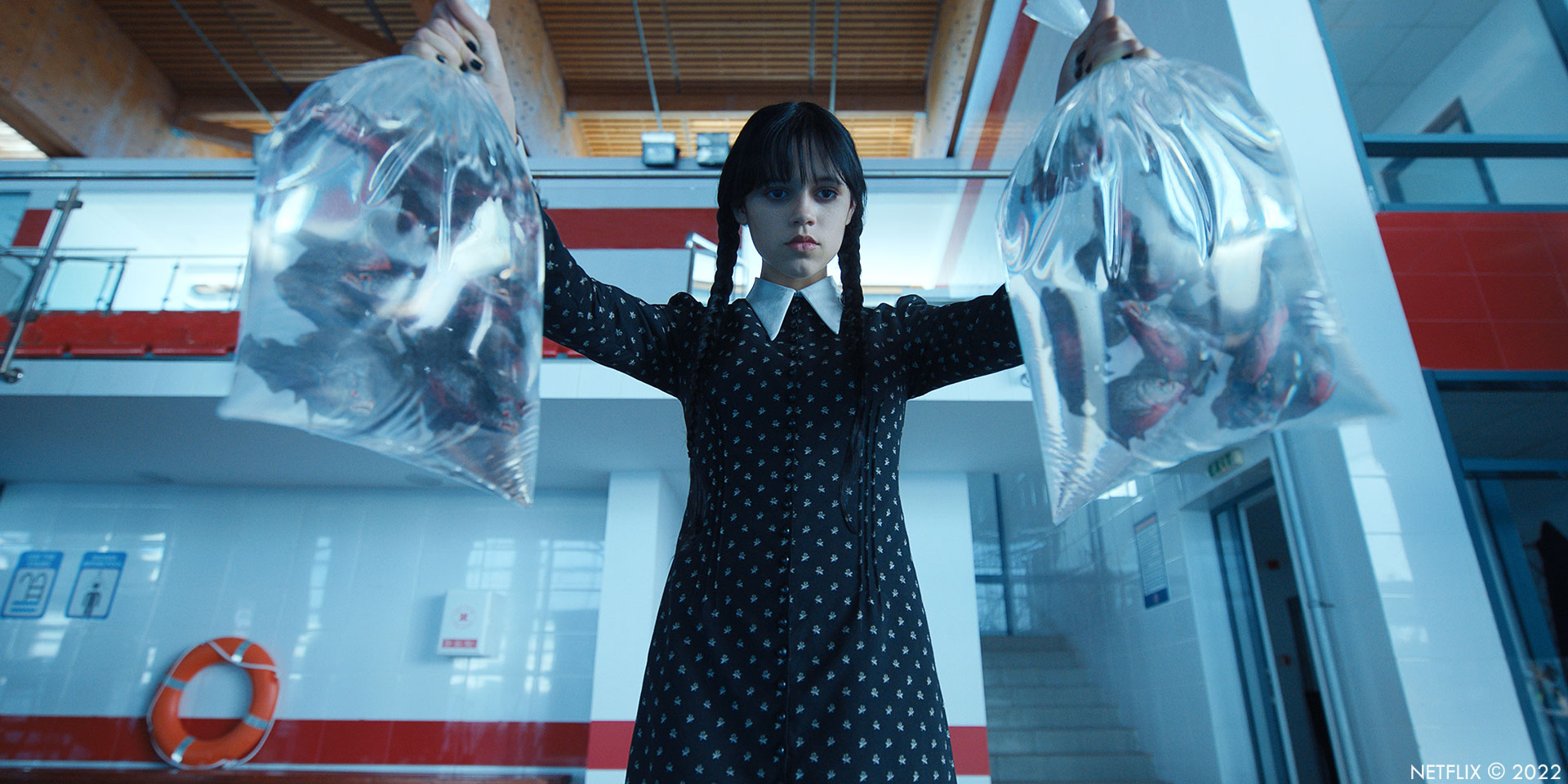
How did you choose the various vendors?
Choosing vendors for a project has become more tricky lately. The boom in streaming projects combined with WFH and an acute shortage of skilled labour has put strain on the Vendor / Client relationship. It’s very easy for a vendor to win contracts and to take on loads of work, often work that is well within their wheelhouse, only to find that labour limitations cause difficulties getting the work done. Unlike other shows, I could really feel the vendors behind the scenes push/pull as they tried to balance resources over multiple projects and deadlines. It’s also made vendors more selective about work they take on.
In choosing a vendor I want to identify ones with the right skill set while also making sure that the contract is the appropriate size and scope. It’s not good to be a very small client to a very big vendor but it is also not great to be a big client with a small vendor. I strive to find a vendor where the contract is big enough to be significant and important to them, yet not so big that it takes over too much of the company’s resources making the production exposed to delivery problems and scope of work increases. It’s also important to keep the type of work at any given vendor as consistent and focused as possible. Awarding a large volume of similar shots realizes significant efficiencies. Having a vendor working on too many different types of shots creates bottlenecks, and is more difficult for them to manage.
Price naturally always plays a role but in inverse proportion to complexity and creative. Almost any vendor can do the easy shots, so price will be the deciding factor. The more complex the work, the more emphasis needs to be put on intangibles such as the particulars of their creative team, technology and pipeline. If a vendor bids low on highly complex work, there is a good chance they don’t have a real understanding of what’s involved. It’s not usually a bargain, it’s a big red flag.
In the bigger picture the decision to work with a vendor is a decision to partner with them. The relationship has to be give and take, you are in it for the long haul and everyone needs to be committed to it. It’s not in anyone’s best interest to over demand or under deliver and if you choose the wrong vendor, that’s where you will end up. Especially with highly proprietary processes like creature work, you’re married to them and you really don’t want it to end in divorce.
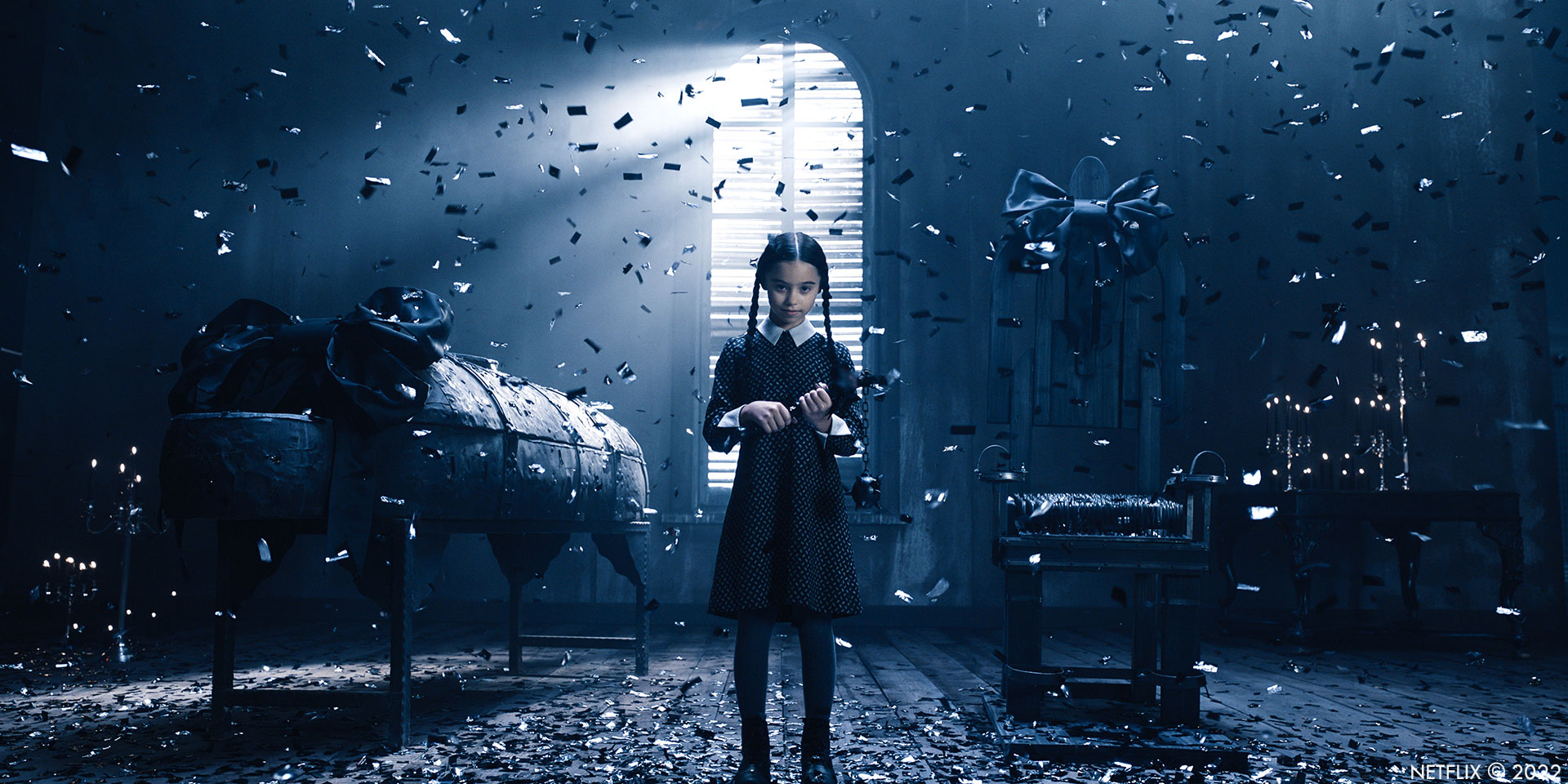
Can you tell us how you split the work amongst the vendors?
We selected Mr. X (now MPC) for our most complex 3D work including hero creature work and Nevermore Academy. Hyde and the Werewolf were our most complex assets and sequences and we chose Mr. X because of their proven pipeline for creature animation and previous work on similar sequences.
Folks provided a host of effects including secondary character work, DMP and General FX and some remarkably complex FX Animation. They were our 3D Swiss Army Knife.
Rocket Science handled the large volume 2.5D Thing clean ups and patches. The 3D Scorpion and some fire effects.
MARZ handled the full 3D Thing asset and animation and provided some additional fire effects.
Mels and Ghost provided and array of enhancements and 3D props.
Stereo D and NetFX provided solid clean up and paint work.
Take 5 provided editorial support and also took on a share of creative compositing.
FX Legion came on board at the last minute as our deadline busters and provided additional compositing and animation.
Painting Practice for Previs and Design.
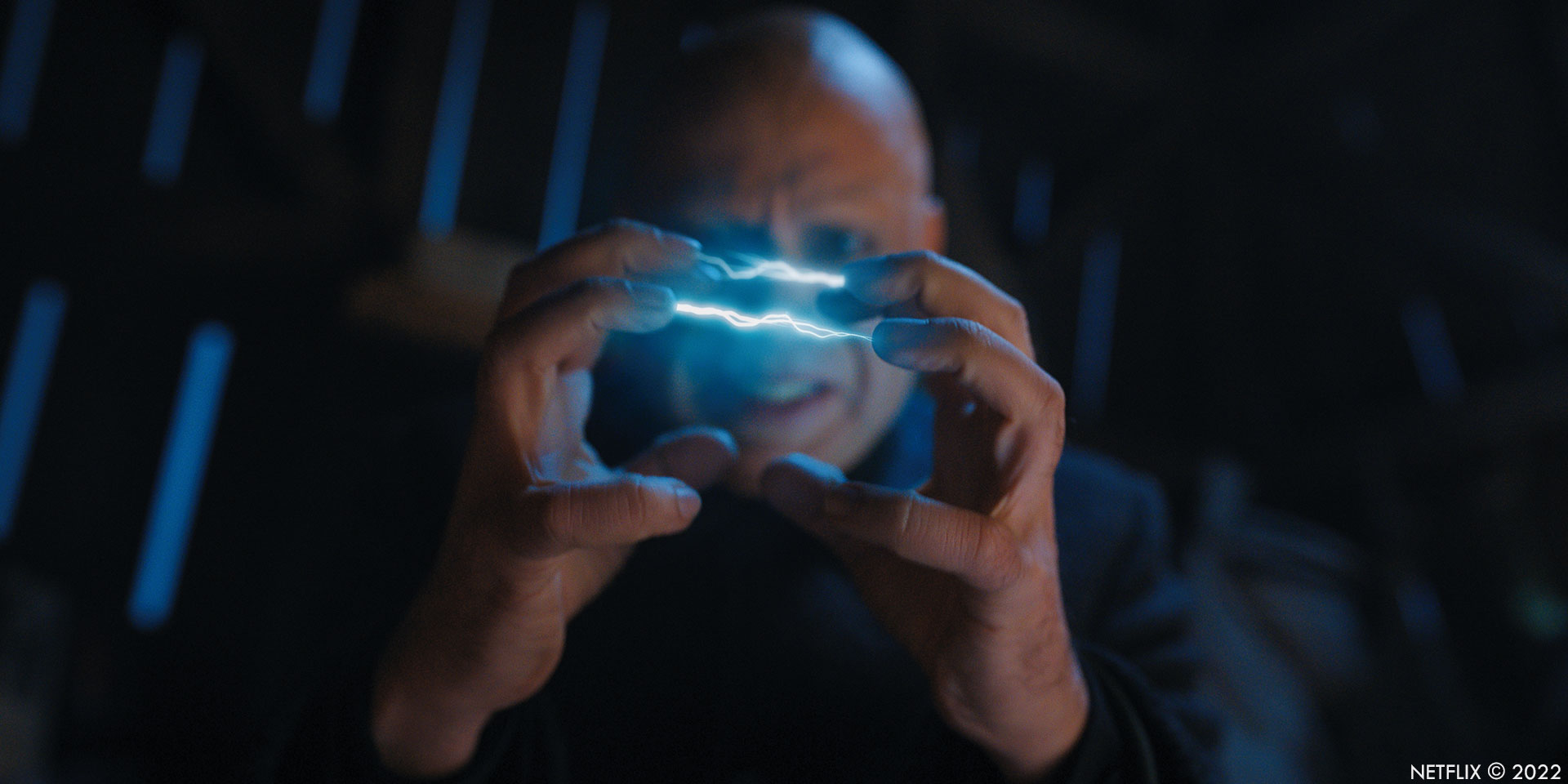
Can you elaborate about the creation of the Nevermore Academy building and environment?
When I learned that Wednesday was going to be filmed in Romania I thought we would find a location, a castle of some kind, that would give us a lot of what Nevermore needed to be. That was hopelessly optimistic. On the initial scout Tim and the showrunners were shown only a couple of options, both of which were two hours travel from the studio and would require extensive CG makeovers. Tim favoured Cantacuzino Castle (more of a villa really) for its grey stonework and facade.
A concept for Nevermore was produced by Production Designer Mark Scruton that built upon Cantacuzino by adding clock towers, additional buildings, quad, Mansard roofs and other structures, He Addams’ized the crap out of it. He incorporated the main studio sets such as Wednesday’s Dorm and the Quad. The existing buildings and grounds of the location were given an Addams Family treatment with gargoyles and vines.
Nevermore and its environment were modelled up in an Unreal by Painting Practice in the UK to allow us to visualize it from different angles and to preview shots. As the main unit plates came in, modifications were made to accommodate the actual camera angles. The preview model was handed off to Mr. X to produce a production ready model.
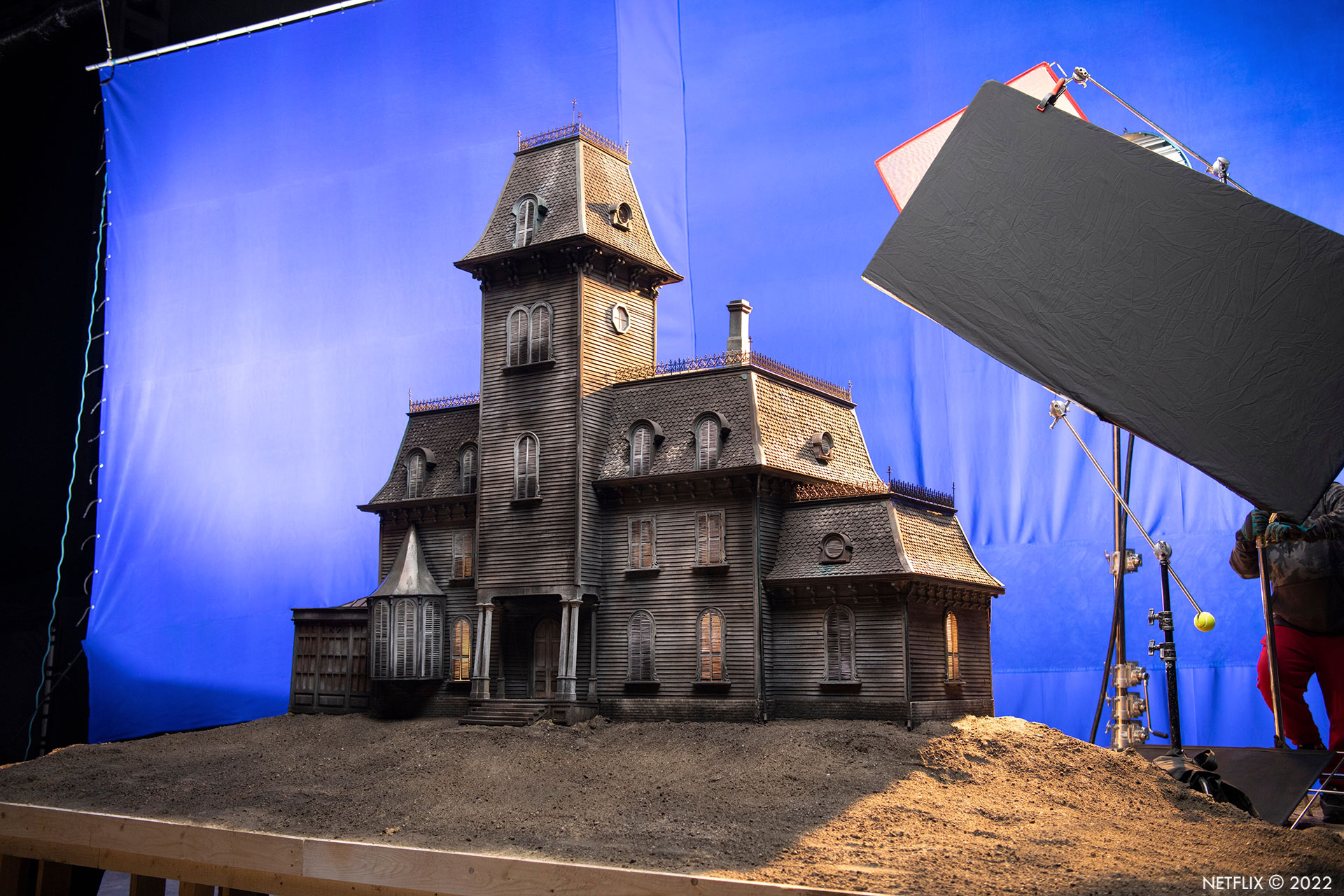
Which location was the most complicate to create?
Beyond a doubt, the most complex set extension work involved turning Cantacuzino Castle into Nevermore Academy. The grey stone walls of the front facade and courtyard were exactly what Tim was looking for and great for coverage but they represented only about 5% of Nevermore. Even the roofs needed to be replaced with digital Mansard, Addams style, roofs. As great as the location looks, it was easy to shoot off the set. It was a constant struggle to avoid racking up dozens of set extensions.
As for the environment, Cantacuzino is nestled into an alpine valley facing a spectacular view of the Carpathian Mountains that, sadly, did not fit the narrative. Only a film crew would go to such a beautiful, scenic place only to not shoot it. The story, set in New England, required Nevermore to overlook the town of Jericho, about a kilometre away, Lake Jericho and Raven Island. None of these existed and had to be created in 3D. We did not want this world to feel false in any way so we used GIS data of the valley and tried to preserve as much of the real world geography as we could, minus the mountains. We placed Jericho roughly where the real town is, the main roads and bridges are the same, the CG river follows the real world river, the distant hills are the same shape and scale. The lake was a result of digitally “flooding” the valley. By doing this, even though wide shots of Nevermore and surrounding landscape are almost entirely CG, the geography feels plausible and realistic.
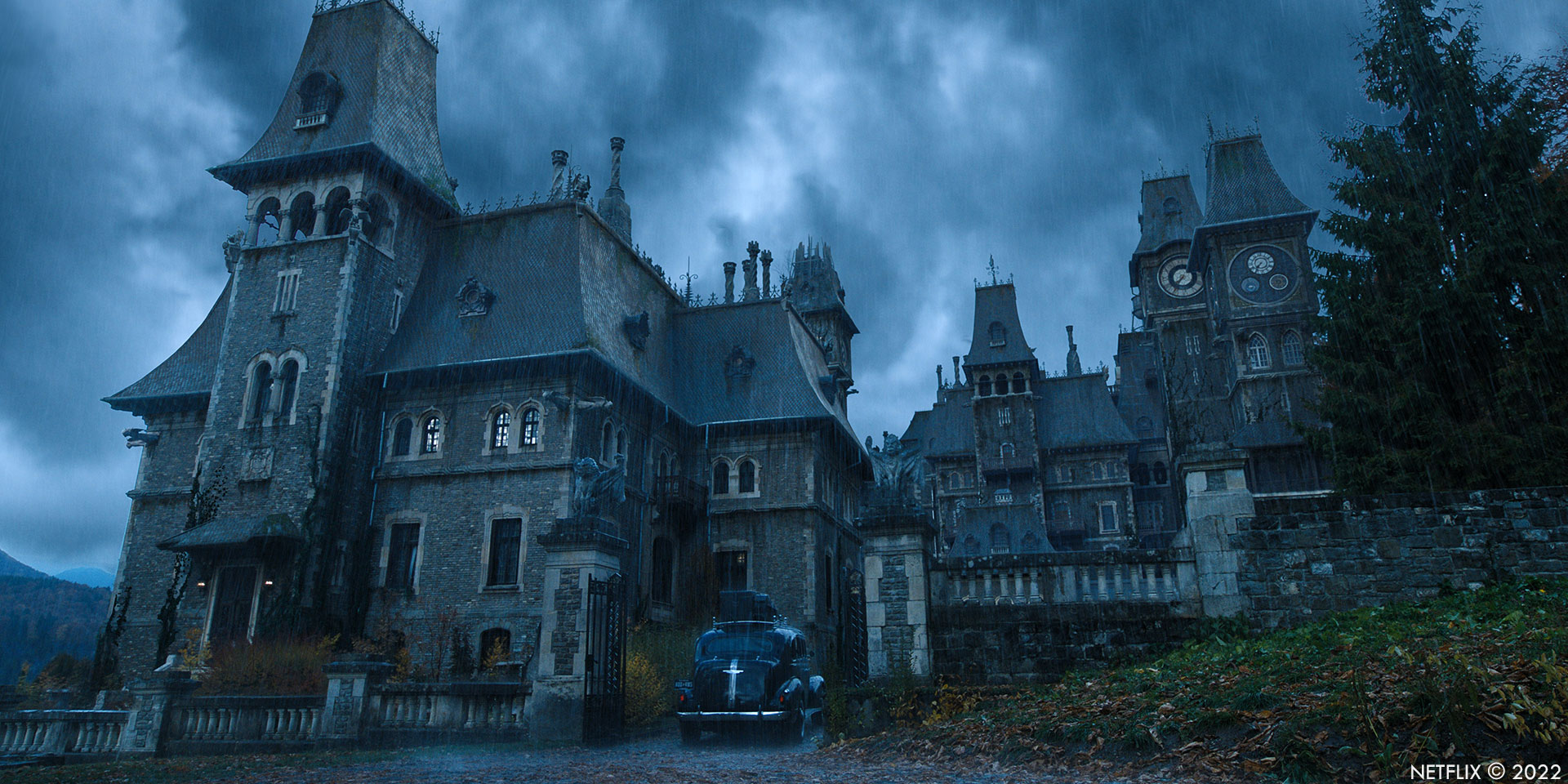
What was the real size of the sets?
One of the advantages of working in Romania was Bufta Studios, a Soviet-era film studio, now in private hands. It afforded us four large stages, half a dozen smaller stages, a large water tank and a lot of exterior grounds to build sets as required. In addition we had two adjoining back lots, one was used to build the town of Jericho, the other provided a spooky forest and parkland.
Having access to these resources, which would have been unlikely to have elsewhere in Europe or North America, meant that the production was less dependent on Visual Effects to build out the world. The Art Department brilliantly created sets that had 360 degrees coverage, often marrying together the interiors and exteriors such as the Weathervane Cafe. Visual Effects did provide a handful of CG extensions to Jericho and a few connective shots for other sets but generally the sets were big enough and complete enough to work on their own. That’s a good thing. It allowed us to put our VFX resources into shots that could only be done as VFX.
One iconic Addams Family character is back, the Thing. What was your approach with him?
Thing was by far the most interesting challenge to solve and a big part of my motivation to do the show. Tim was very clear from the very first meeting that Thing needed to be a practical performance by an actor. I was very much on board with that approach knowing that it would give us the best look and performance, as it did in the 90’s films. At the same time I understood how big an impact it would make on the crew and schedule. Having a large actor in a blue suit in the middle of the shot meant blocking scenes around his body, lighting would need to accommodate his shadow and art department would need to modify their sets. He would need a lot of support from prosthetics and would be a potential scheduling nightmare. We would need to work within the actor’s limitations and it would take extra time on set to get it right. It could easily become an irritant or a budgetary problem. On top of that, painting out the rest of the actor, leaving only his hand, was going to be difficult and expensive. Producers associate paint outs with being inexpensive, this was not going to be that. I believed that we would give this approach to Thing our honest best but that over time we would find ourselves doing less practical Thing and more 3D Thing.
These concerns were not unfounded but happily it worked out. Tim, who established the process of working with Thing over the first four episodes, embraced the limitations and worked to them. It was really his conviction to the approach that made it stick and kept the other departments on side. The other directors followed suit. In the end, Thing is 90% practical with only around 10% being CG.
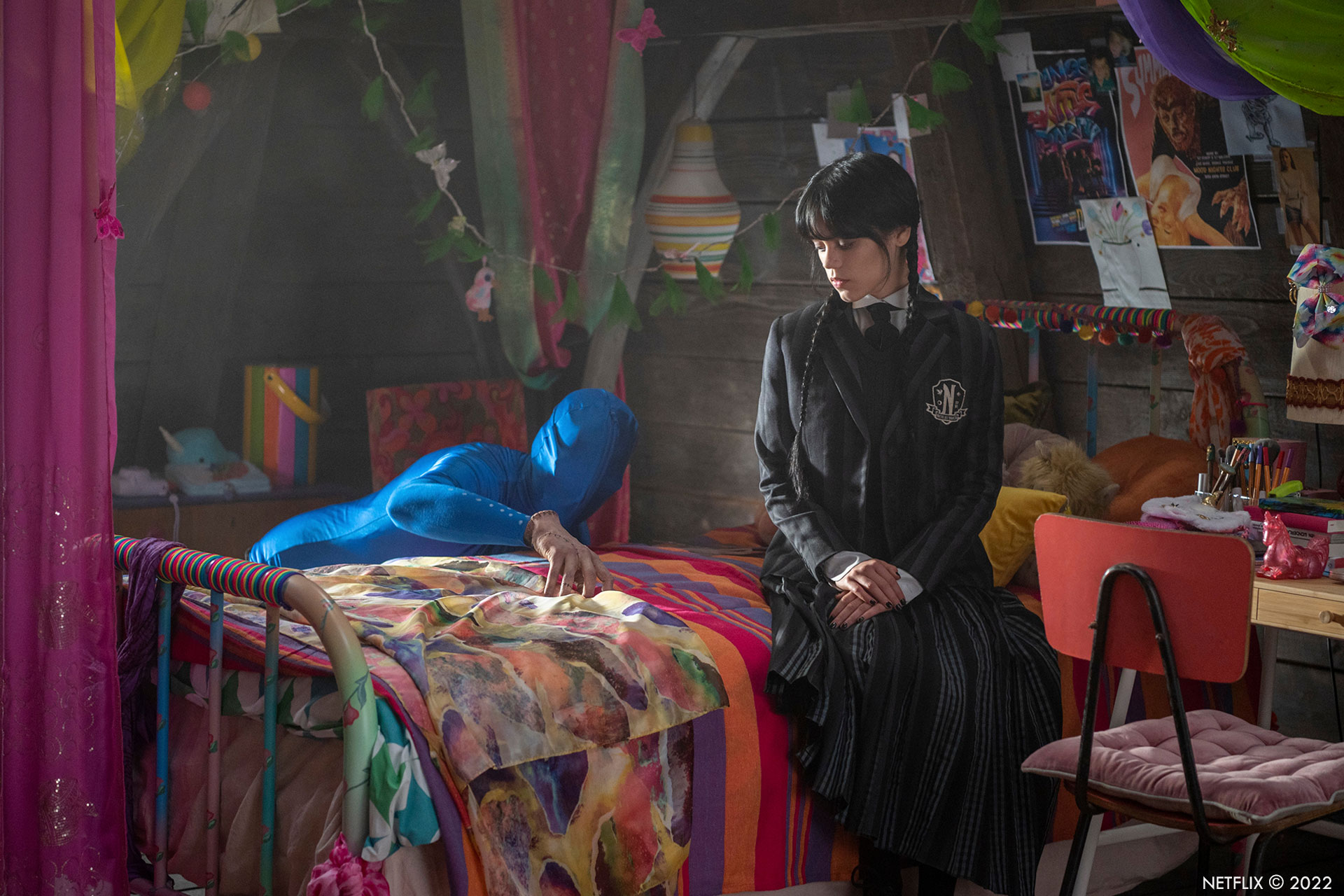
Can you explain in detail about its creation and animation?
Ok but it is a long story.
Once we had agreed upon the approach, we needed to work on making Thing a character. The goal had to be to make him feel totally real, irrespective that he is a disembodied hand the audience needed to be fully invested in him as a living being.
The design came directly from Tim. He provided a sketch of Thing in different poses, covered in stitches, as though he was all that remained after some terrible industrial accident. In the top corner he wrote “Goodby Eddie” and “ I am a Rock”. Best direction ever. The concept was developed further by Neil Scanlan and Tristan Versluis, Prosthetics Designer, to finalize the look.
We started by filming and compositing basic tests at Rocket Science VFX to get an understanding of the process and challenges. We quickly discovered an unexpected phenomena. If you simply took a person and painted out the rest of the body the viewer still senses, or “sees” the presence of the painted out person. The brain sees a hand and automatically knows it is attached to a body, even if it has been rendered invisible. The composites look like a cheap Saturday morning effect.
Digging deeper, I realized that the team that did the character of Thing in the 90’s movies, played by Christopher Hart, had attached a prosthetic stump to the top of his hand. This was probably done to allow them to simplify the composting process but it served another purpose: it broke the bond between the puppeteer and the puppet. We had our Prosthetics designer, Tristan Versluis, create our own version of an attachable stump. A week later he sent us a test video. Suddenly, Thing came to life. The brain no longer associated the hand with the performers body. The prosthetic stump was a misdirect that made Thing feel totally independent.
The next step was to cast the right person. More of a puppeteer than a conventional actor, but still very much required to deliver a performance that conveyed the pathos. In addition, the role would be physically demanding, requiring the actor to fit in uncomfortable positions for periods of time, under tables, inside mattresses, inside walls and so on. I was fortunate enough to be part of the casting process, which really meant watching dozens of casting tapes. We cast in the UK and Romania. I was very much in favour of finding a Romanian to play the role to ensure that we had unrestricted availability and would not need to fly him in an out every time he popped up on the call sheet. We soon narrowed it down to three candidates that were called back to do in-person auditions with Tim and the producers. There was clearly a front runner, Victor Dorobantu, a Romanian magician. He excelled with amazing dexterity and speed and he could make creative innovations on the fly. Victor’s background as close up magician was another asset, he understood illusion and misdirect and the point of view of an audience, skills I learned to appreciate over time. But he had little acting experience and had never been on a movie set before.
For VFX, we knew that the more prepped Victor was, the greater chance of success. Failure would mean replacing on set performances with a 3D Thing. Victor would become a glorified eye line and lighting reference. That would be both expensive and highly unsatisfying.
We started workshopping with Victor in earnest. We shot camera tests with the production crew to familiarize Victor with the on-set process. We rehearsed actions and scenes on video, practicing moves and exploring different ways that he could communicate. He began developing a repertoire of mannerisms and gestures as ways to communicate. Victor learned ASL. We created a kit of props that he could use to give Thing some action. We experimented with camera rigs and dollies to improve Victor’s freedom of movement for long walking shots. Everything we could think of.
Meanwhile, Victor’s hand was life cast to create all the custom prosthetic applications. We refined the stump concept into four configurations, the Full Stump, Lazy Stump, Relaxed Stump and Collar Stump. Each one was designed to optimize a particular action needed for a scene. For example, the relaxed stump, the most frequently used, was best for general “walking » and “talking” scenes. The collar stump was used for occasions when he needed to “stand” upright on his stump. The Full stump was more erect and allowed Victor the option to puppeteer the stump with a rod, useful for character gestures or “looking around”. We ended up with a stump kit that the prosthetics crew would apply daily, two hours to put it on and another hour to take it off at the end of the day. Long enough that we usually had to commit to one configuration for the next day’s filming.
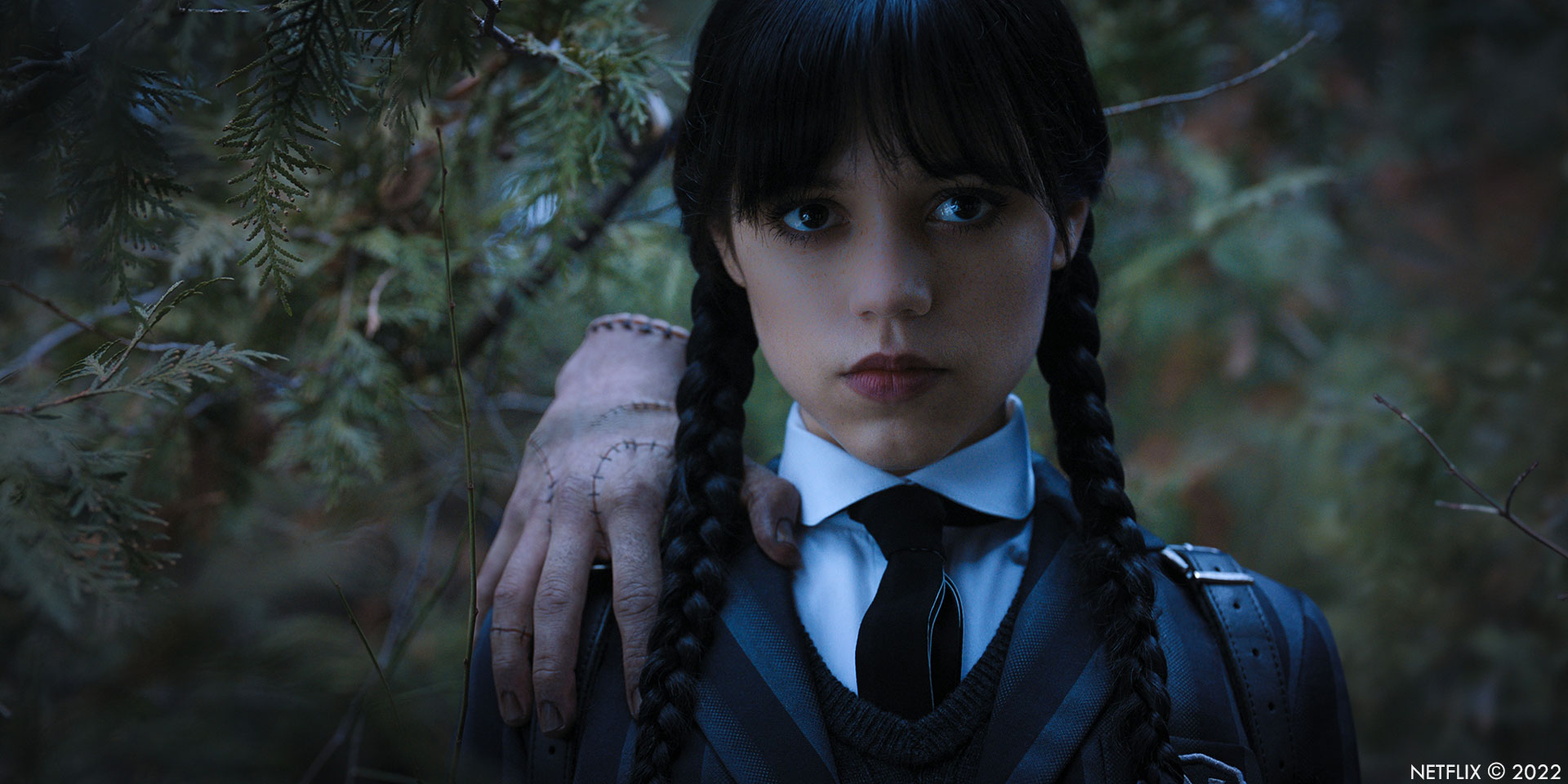
Parallel to this we began to develop a 3D version of Thing for scenes that were impossible to perform practically. We sent MARZ VFX a scan of Victor’s life cast along with slew of photo reference and rehearsal videos. The mission was simple, create a 3D hand that looks and moves exactly like Victor’s. This was a big ask and MARZ delivered. The 3D Thing could be intercut with Victor seamlessly.
Tim does not do rehearsals much, he prefers to allow a scene to develop organically on set in collaboration with the actors. The first day of filming with Thing, the pivotal scene where Wednesday discovers Thing spying on her, would play out raw with Tim Burton and Jenna. No pressure. The day arrived and I was nervous. Victor was irrationally confident. This moment would define the tone for the rest of the show. Will Victor pull it off or will we be doing hundreds of CG Thing shots. The scene was blocked. The camera rolled. Victor nailed it. Jenna was acting to a hand and the hand was acting back. All of the work and preparation payed off. From that point on, Victor owned the performance.
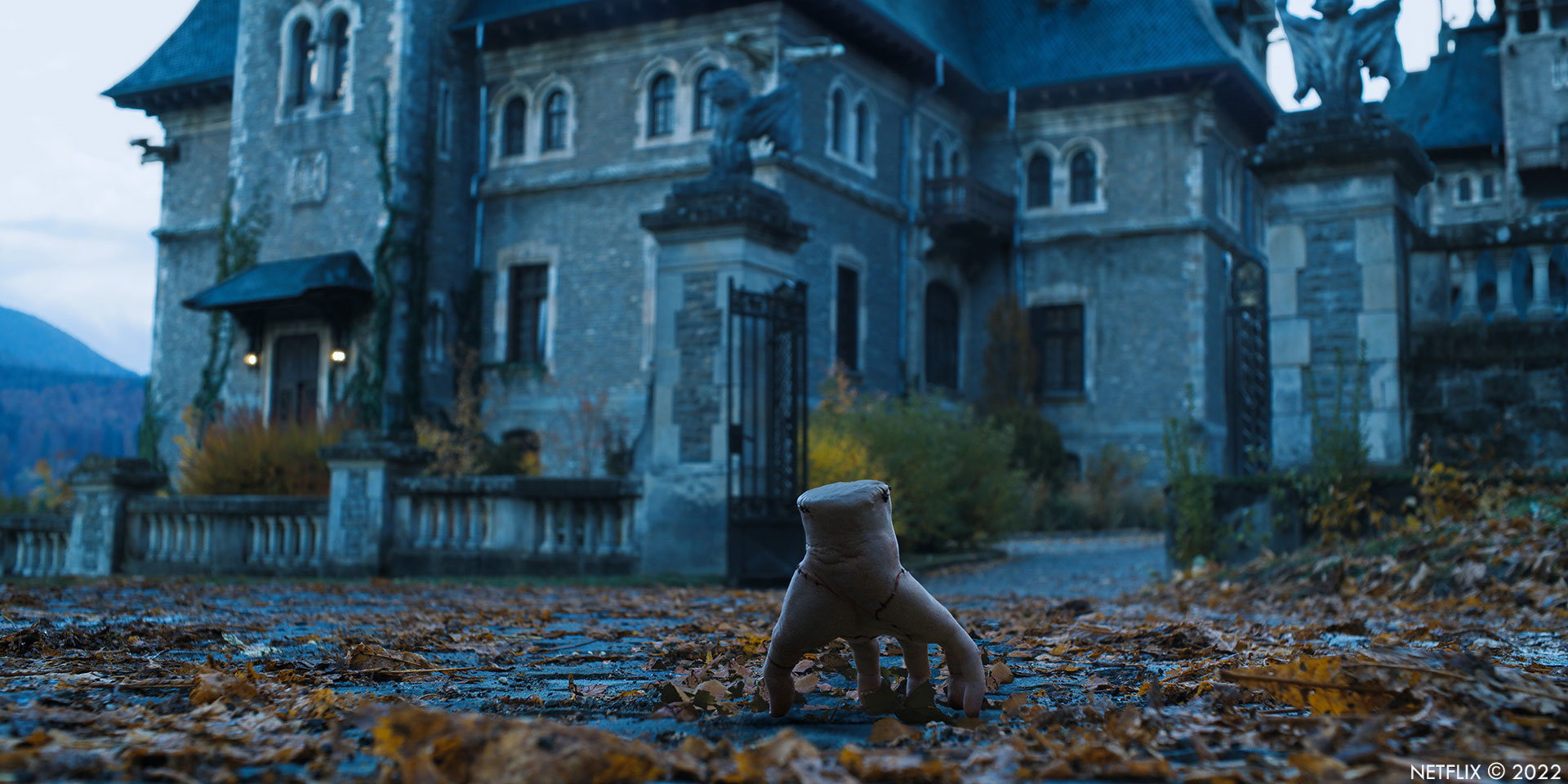
Can you elaborates about the design and the creation of the Hyde?
The design for the Hyde went through a lot of iterations from a number of creature designers. None of them captured the essence of Hyde that Tim was looking for and we were getting dangerously close to our start date. As was often the case, the design eventually came from Tim himself in the form of a single water colour concept (Tim famously always carries a water colour set with him wherever he goes). The creature was loosely inspired by “Weirdo” model kits from the 60’s (If you don’t know what a “Weirdo” is, look it up) and the art work of Big Daddy Roth (Ed Roth). Based solely on this one concept image, Neil Scanlan was commissioned to developed Hyde further and produce a sculpted Z-Brush Model.
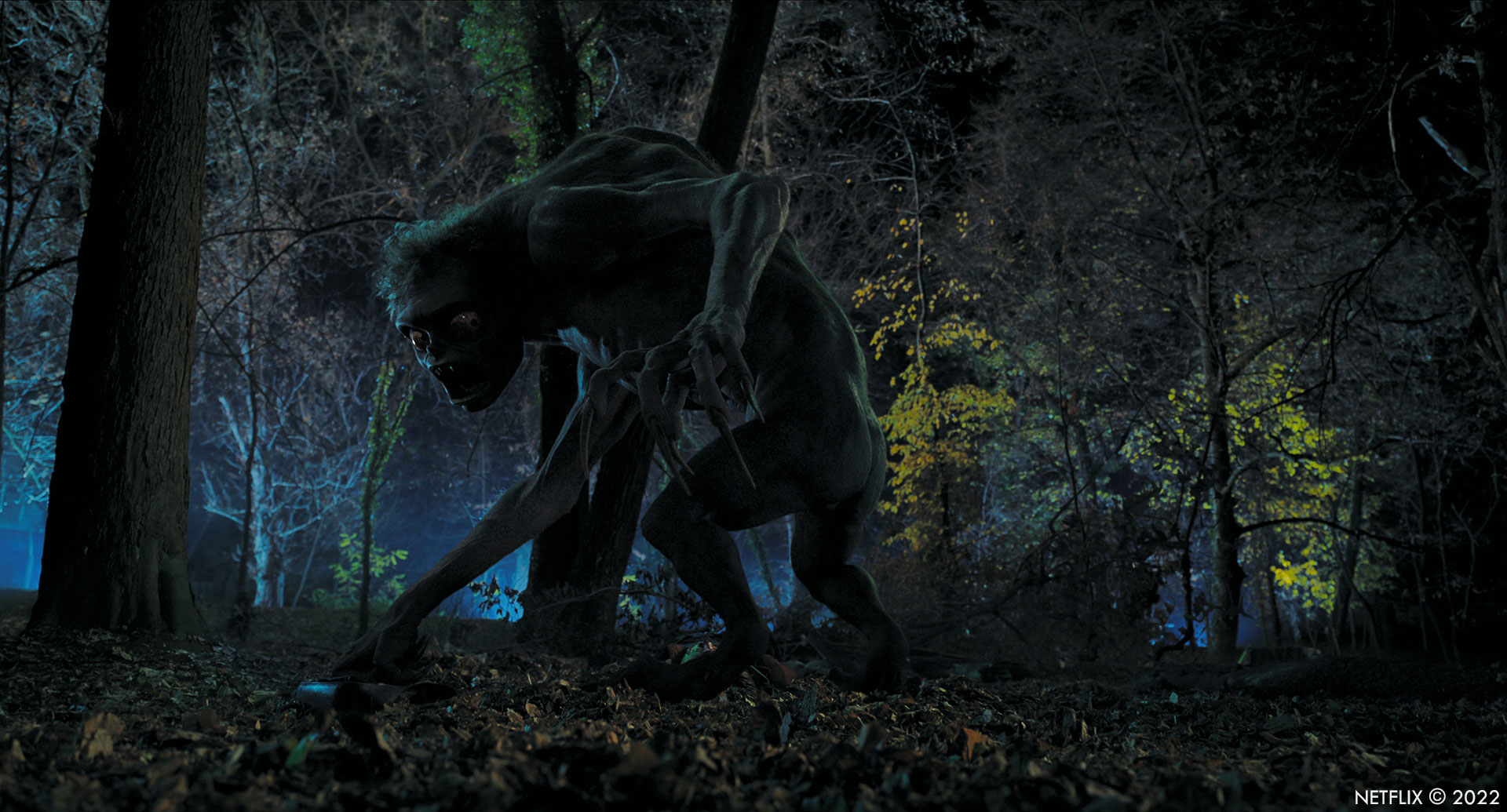
Can you tell us more about his animation?
As with many creature designs, it falls upon the VFX house, in this case Mr. X (MPC), to take the CG model, figure out the anatomy and movement, and make it come to life. Unlike Thing, there is not much that can be provided as meaningful on-set performance. We filmed every Hyde shot with a Stunt Person on stilts in a grey match move suit. This was really helpful in terms of blocking shots, eye lines and filming clean plates and also gave the editors something to cut the scenes with. It did not, however, give us a good guide for the animation, the anatomical differences between the Stuntee on stilts and the Hyde creature were too great. In almost all cases it was up to Mr. X to rebuild the performance. Hyde is mostly key frame animation, although Mr. X used some in-house motion capture to enhance the animation and to preserve the physics and weight, always a challenge in character work.
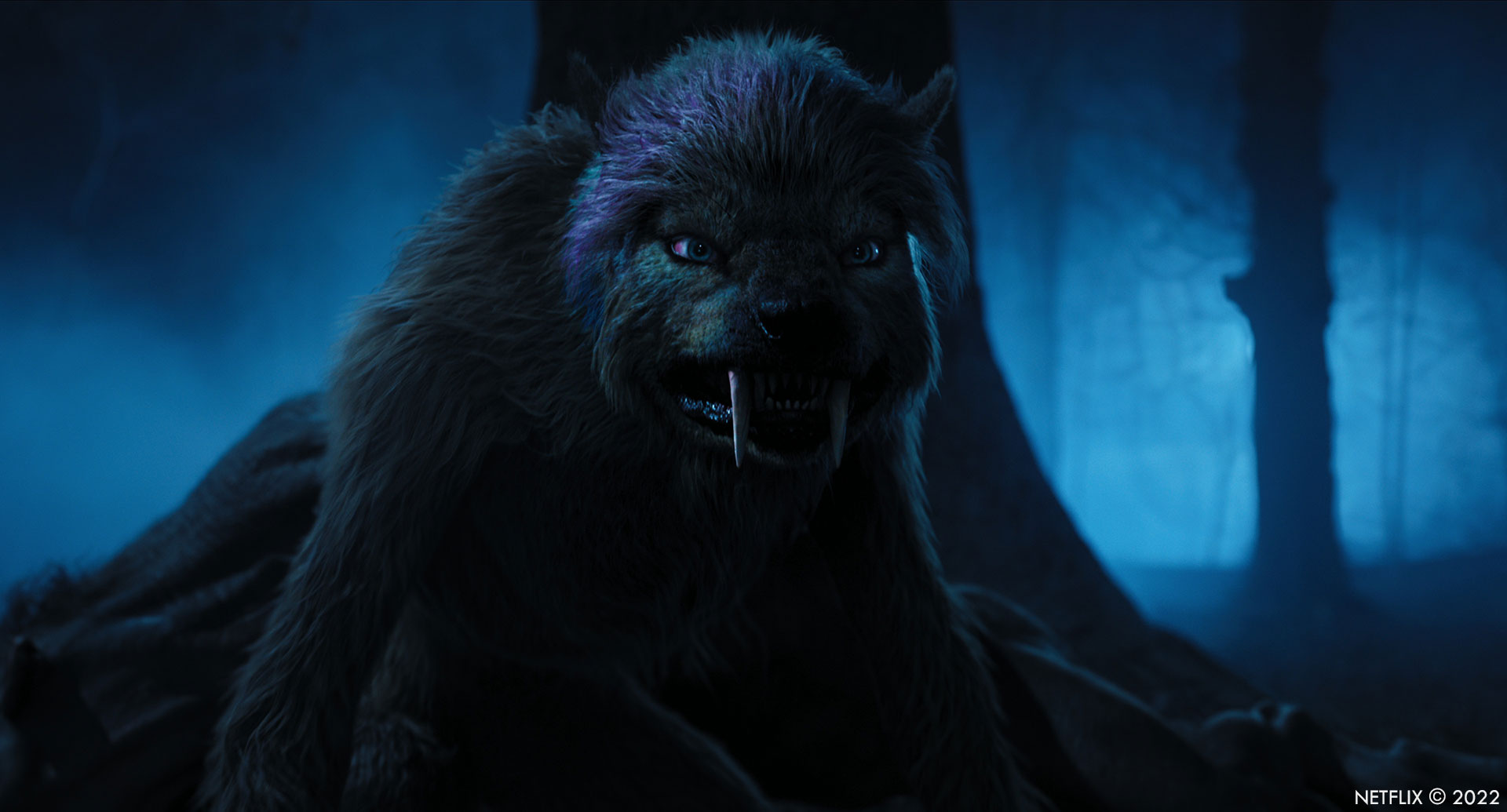
How did you handle the transformations from Tyler to the Hyde?
Effects like the Hyde transformation are very 3D post heavy. There are lots of seriously complex things to solve, mostly by big-brained people in dark rooms. From a VFX Supervision point of view, my job is to provide strong plate photography and interactive elements.
The trick with these sequences is to show just what is essential, not too much or too little, just enough to set the tone and allow the audience to buy into it. The physical correlation between Tyler and Hyde was extreme. To avoid it looking like a cartoon morph it was necessary to break up the transformation into a series of shots, each having its own focus and purpose. With this approach we could focus the audience on the important beats and not get bogged down in solving problems that don’t really matter.
What was the main challenges about the Hyde?
The tricky thing about Hyde is that he needed to be a scary, maniacal monster yet there is a comical aspect to his design, particularly his big, goggly eyes. The performance needed to be driven by rage but it is easy to undermine that with a comical look. I think we were mostly successful in achieving this by adding a crazed layer to his performance, like what we see with the Weirdo characters. There are times when the horror and comedy elements work well together, when Hyde is revealed in a jump scare that is immediately followed up with a nervous laugh. Very much like Large Marge from Peewee’s Big Adventure.
I feel there is room to grow and develop the Hyde character more and, if the show goes to a season two, I will be working hard to bring Hyde to the next level.
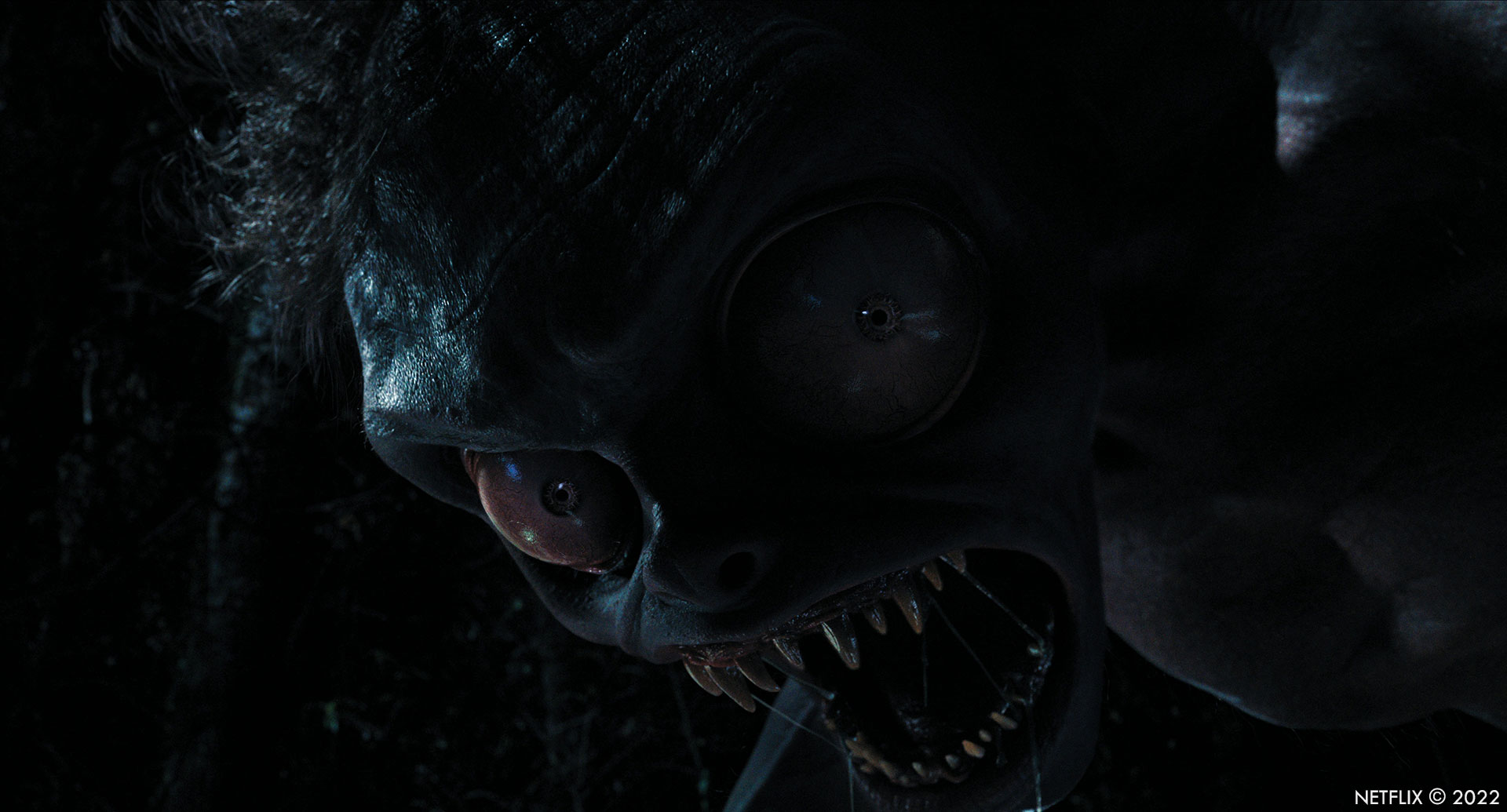
Can you explain in detail about the death of the bad guy?
Crackstone, our bad guy, ultimately defeated by Wednesday, self immolates and explodes into a cloud of embers and ash. The sequence was storyboarded by Director James Marshall so we had a good shape to the action before filming but it was the climax of the series and we did not have a strongly developed concept of just how it would look. The effect would be designed and executed in post. It needed to be big and it need to be routed in fire, referencing the 103 scene where Crackstone trapped the villagers in the meeting house and burned it to the ground. Crackstone similarly needed to burn as he had burned others. The fire needed to come from within as though he was consumed by his own guilt.
In Post, Folks VFX created concepts to illustrate the progression of the spread of the disintegration, starting from the knife wound and progressing over his body in a series of shots. Geo from a scan of the actor was match moved and used to animate his body eroding. From there they developed simulations for the swirling embers, ash and smoke. The smoke pyre streaming from Crackstone’s mouth was a nice enhancement by the team at Folks. Finally, fire, smoke and spark elements were composited to sweeten the effect and add a level of reality. The result was very satisfying and delivered Crackstone the comeuppance he deserved.
Did you want to reveal to us any other invisible effects?
I love invisible effects shots, they are perversely satisfying and a little like the Penn and Teller cigarette routine.
There are some invisible effects in the show that no one will ever know of and I won’t tell. One in particular was enormously complicated, just to appear as a normal looking shot. It’s probably the best VFX shot in the show. Good luck trying to spot it.
One shot I will comment on is Crackstone’s appearance. The scene was recut in post to create a dramatic push in to a close up of Crackstone by adding a 450% blow up, way beyond any acceptable or sane amount. Imagine my surprise. It was not a shot we had ever planned for and we lacked a lot of the elements we would need. There was no possibility of shooting a pick up so it had to be a VFX fix. We made a few attempts to enhance the image, including some AI algorithms, but it was pretty hopeless. My pleas to recut the sequence or reduce the blow up fell on unsympathetic ears. Clearly we had to find a solution.
The task was taken on by Folks VFX in Toronto. They reconstructed the plate and the actor using 2.5D high rez DMPs and projections onto a match moved 3D scan. They added a 3D smoke simulation and used deep compositing in Nuke. This allowed the now 3D Crackstone to exist inside the 3D smoke sim. The end result is actually a full 3D shot and is amazingly good. No one would guess the shot was not in camera. Nor will anyone appreciate the complexity or amount of work that went into it, but that is the joy of invisible VFX work.
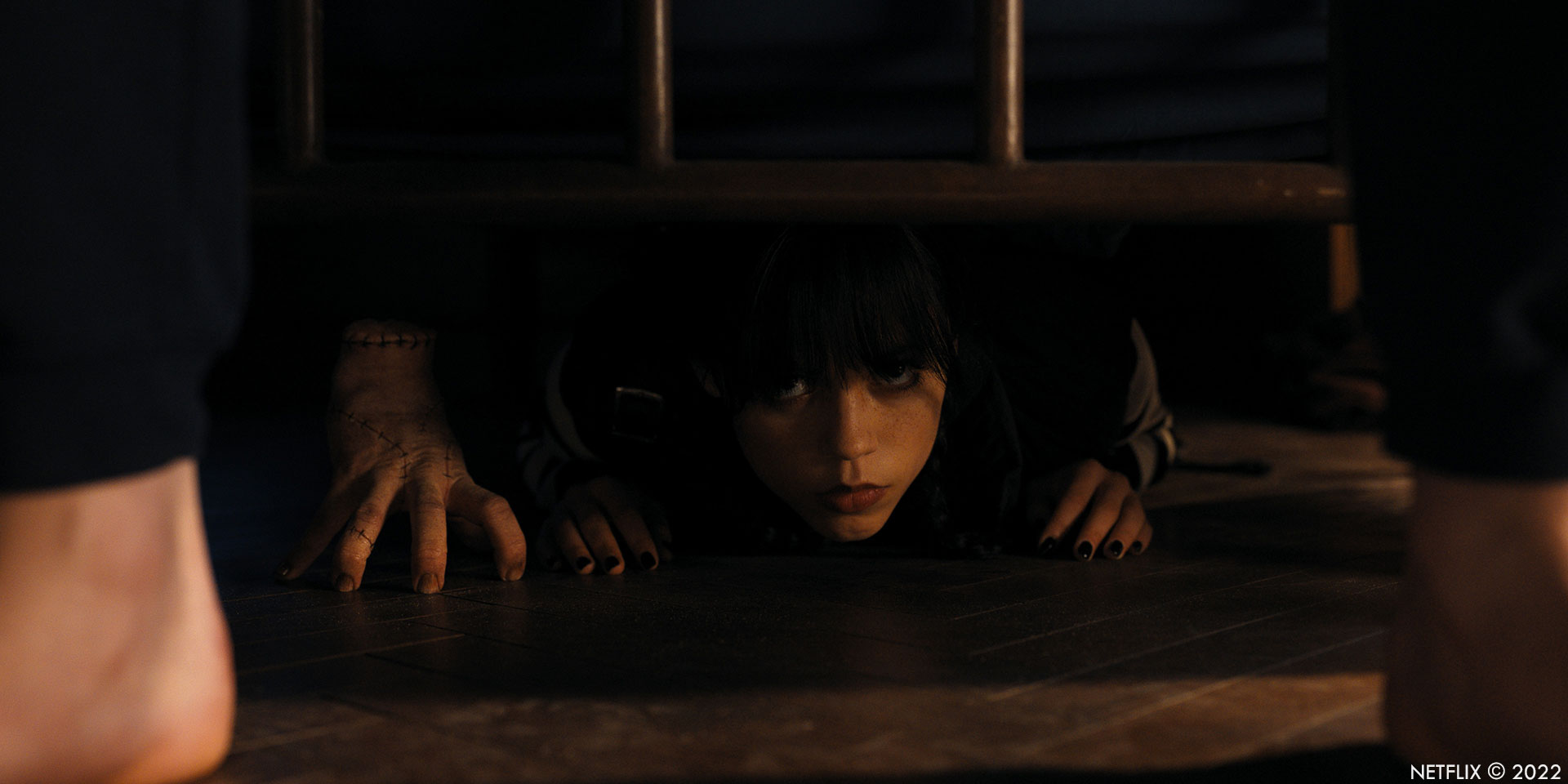
Which sequence or shot was the most challenging?
The Poe Cup canoe race in Episode 102. It involved actors in canoes, stunts, creatures both above and below the surface, and a bevy of 3D gadgets. There’s a lot of stuff going on in that sequence. It was shot on a lake along with all the complications that go with that. The main unit and stunt unit did a good job getting the primary beats with the principle cast but left significant gaps in the action to fill in. By the time we had an edit to determine what was needed to complete it, the weather had turned, the leaves were off the trees and the lake was icing over. There was no way additional footage was going to match and no possibility of filming any additional background plates.
We storyboarded the missing action and put together a plan. Kent, the siren played by Oliver Watson, who was half human, half fish, was always intended to be picked up on two VFX water tank shoot days. We now needed to get all the other bits on those days as well.
We worked with the large water tank at Bufta studios, conveniently right outside the production office. We set it up to film one full day underwater with the actor and another full day for canoe pick-ups.
For the Kent shots we fitted Oliver with a mono-fin and pencil skirt to emulate the siren form and swimming movement. Working with Stunt Coordinator Brett Chan, SPFX Supervisor Jason Troughton and Underwater DOP Ian Seabrook we filmed Oliver swimming through his actions over two days. Oliver spent the better part of that time underwater with a breathing apparatus which he would remove when rehearsing or filming a take. I felt we were torturing him, but apparently he was loving it. Oliver did all the action and not once did we need to have a stunt performer step in. We also filmed Thing underwater for a number of shots. Victor happily got in the pool and performed several shots while completely submerged.
For the above water action, including the canoe wreck, which involved pushing the canoe sideways into a large buoy, we set up large blue screens around the pool. The canoes were rigged on cables so they could be controlled in a reliable way. For the actual crash sequence a special break away canoe was mounted on an underwater sled to make the action both safe and repeatable. It was very successful.
There is always a danger on Blue Screen shoots that the composites look fake. That almost always comes down to lighting. Fortunately Second Unit DP Tudor Lucaciu did an excellent job such that the plates cut perfectly against the exterior footage.
In post the sequence continued to be a challenge. Mr. X took on the responsibility of creating the 3D Siren tail and attaching it onto Oliver’s body. Underwater tracking is difficult at the best of times but attaching a CG appendage to a live action actor was particularly difficult. To their credit there are no shots in the sequence where we replaced Oliver with a digi double. Mr. X also created an astoundingly good CG net simulation that Kent becomes entangled in. I don’t really know how they pulled that one off but it must have involved some seriously good FX sims.
MELS VFX did an excellent job with the blue screen compositing and 3D enhancements to the canoe action.
MARZ completed the sequence by adding a 3D Thing in the underwater shots.
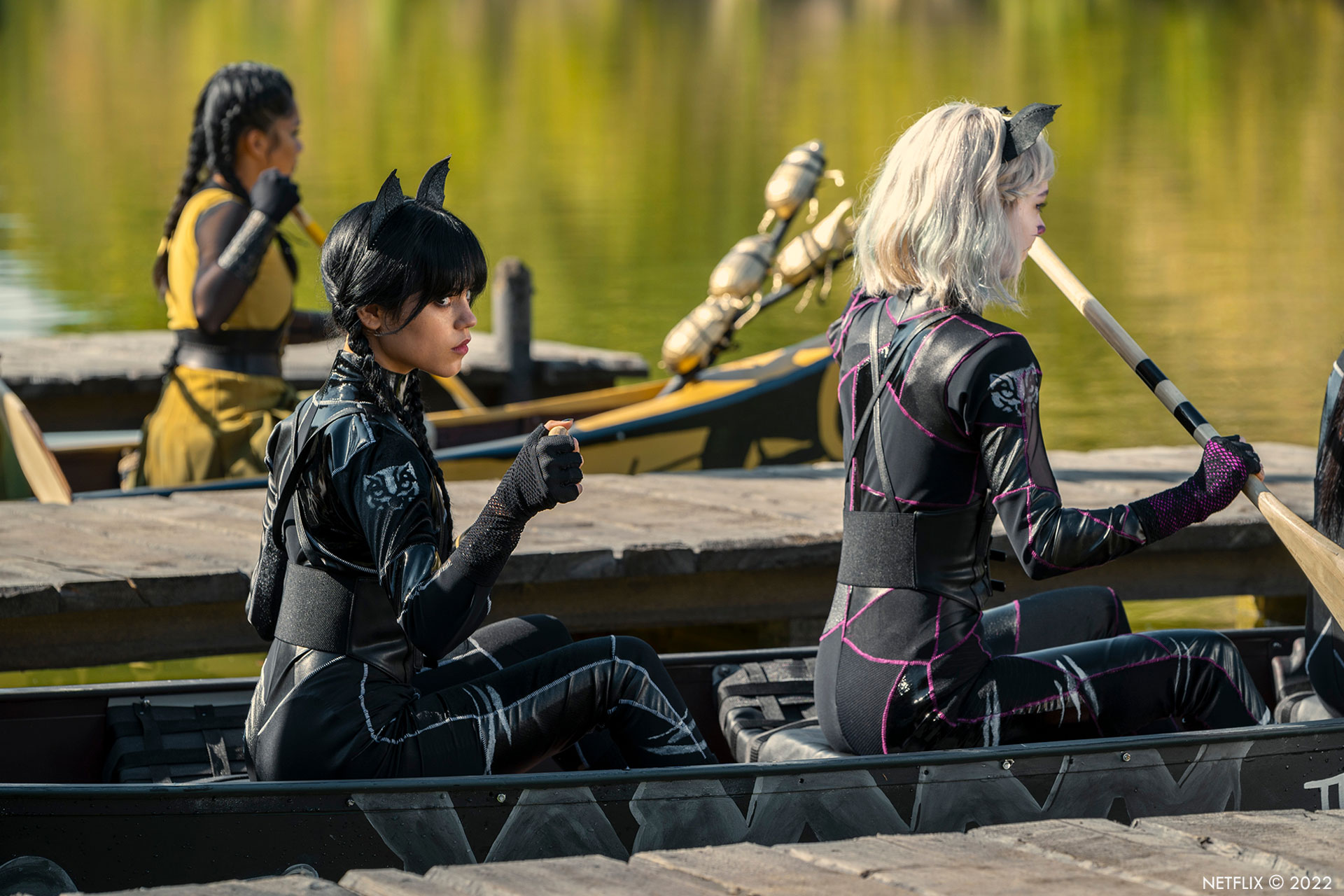
What is your best memory on this show?
There were a lot of good memories on this show. It was that kind of show. I think the one that stands out the most is the moment Victor first performed on set and realized Thing was not just going to be ok, Thing was going to be great.
How long have you worked on this show?
My involvement on the show was 15 months from prep to delivery.
What is your next project?
Still to be determined but I believe I will be working in Ireland in the spring. It’s a great place to work. Until then I am taking it easy.
What are the four movies that gave you the passion for cinema?
There are many movies that had a profound impact on me and fundamentally changed how I think about cinema. To contain it to four is tough, but here are the four standouts that cause me to drop what I am doing and watch them time and time again.
Not necessarily in that order.
A big thanks for your time.
WANT TO KNOW MORE?
MPC: Dedicated page about Wednesday on MPC website.
Netflix: You can watch Wednesday on Netflix now.
© Vincent Frei – The Art of VFX – 2022





